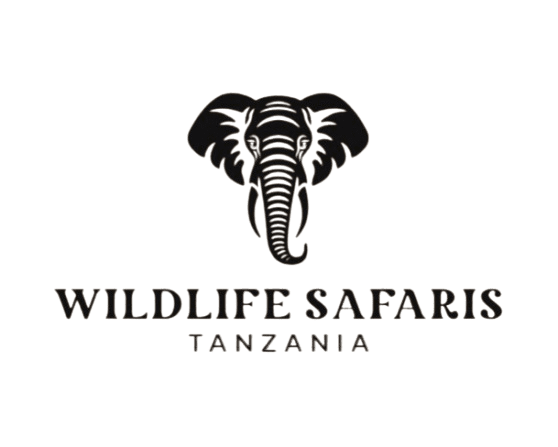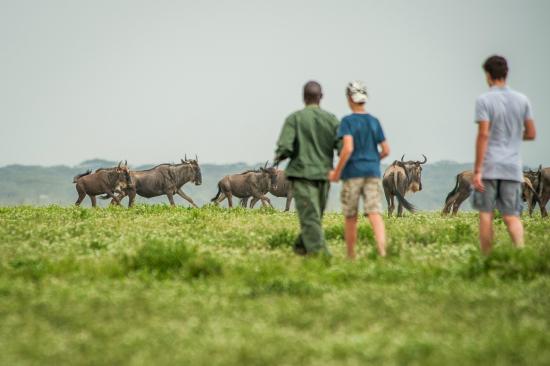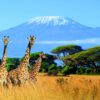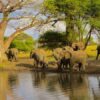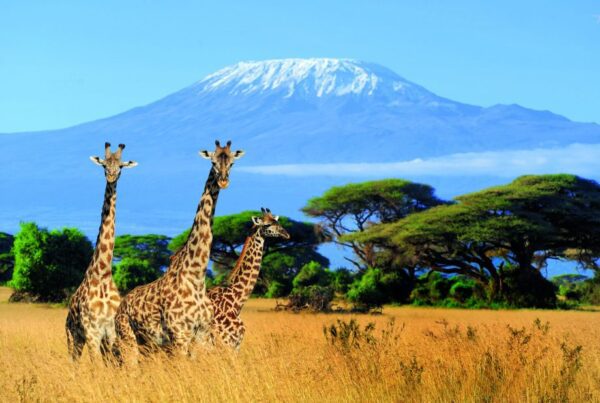Tanzanian Walking Safaris
Tanzania is home to a wide variety of civilizations, towering mountains, mirror-like lakes, and abundant wildlife. Walking safaris have a certain allure, even though taking a safari van is a distinctive and conventional approach to see its natural splendor. These amazing walks transport you to craters, hills, and parks teeming with animals, all of which exhibit unique beauty that few people are aware of. Walking safaris in Tanzania might only be available in a few places and camps, and there might be restrictions. Stay tuned as we go into the specifics of this amazing journey.
Mahale and Gombe walking trips.
In Gombe and Mahale, guided walks are essential, but in other parks, they can be considered an added luxury. Why is this the case? The chimpanzees cannot be trekked from a car’s height. Therefore, the only method to investigate these endangered primates is on foot.
Only eight visitors are permitted each chimp hike in Gombe and Mahale. Following hints like trembling branches or feces, you will traverse deep woodlands accompanied by an armed ranger. You will be briefed about this event, including what to anticipate and the regulations to follow, before you set off on your tour.
Treks with chimpanzees can last anywhere from three to five hours. Depending on where the chimps are, you may spend two or three hours walking through the jungle. After you locate a colony of chimpanzees, you will spend the next hour observing them going about their everyday activities.
Chimpanzee permits for these hikes cost $100 per person, according to further information. Additionally, your top priority should be safety: wear earth-tone clothing, avoid feeding the chimps, and maintain a safe distance of at least 8 meters (26 feet) from them. The optimum time to hike the chimps is from June to October for the finest experience.
Ngorongoro Conservation Area walking safaris.
Guided excursions through the deep woodlands are available at Ngorongoro camps. Imagine yourself and your Maasai guides strolling around the rim of the crater. The animals that are hidden from view from a safari vehicle will be explored by these local guides. To give you a quick overview, the Maasai are skilled at recognizing medicinal plants; they will observe, gather herbs, and explain their use. Monkeys, lions, and leopards are frequently encountered during walks around the rim. People often begin their sundowner by taking a leisurely stroll along the rim to a bush breakfast location that has been arranged.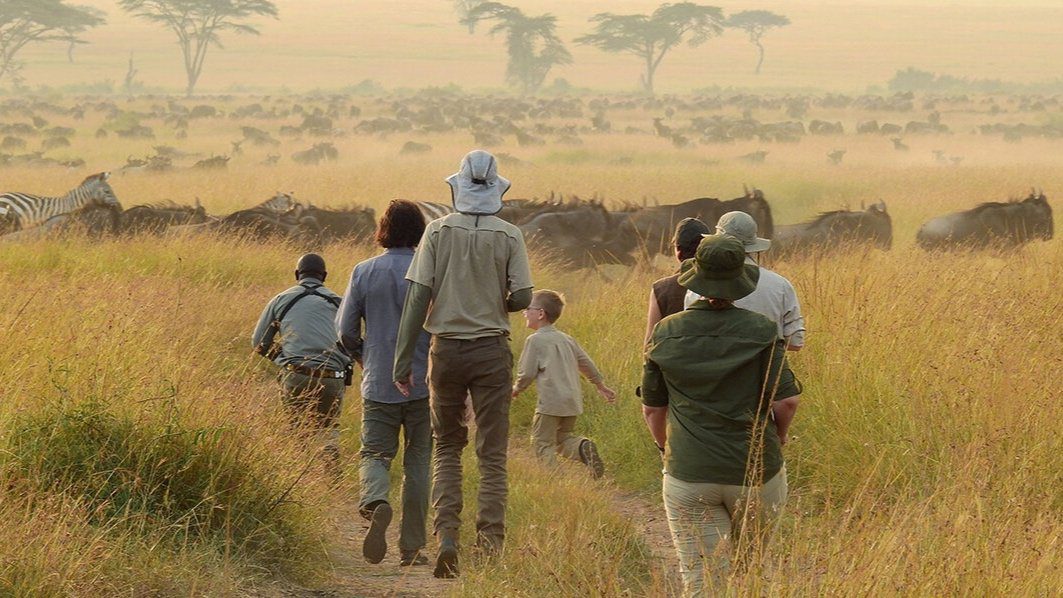
Walking safaris are also ideal in the Empakai Crater. Large groups of flamingos are gathered on the soda lake, which occupies almost 75% of this crater. You could also come across zebras, buffalo, elephants, and wildebeest. Hiking along the rim puts you in a prime location to observe the Ol Doinyo Lengai volcano and Lake Natron.
When paired with a Maasai village visit, walking safaris in this protected region take on a new dimension. People frequently travel to the Maasai boma to assist the Moran, who are Maasai youths between the ages of 14 and 30, in caring after sizable herds of cattle. Walking in the Laetoli or Olduvai Gorge is the ideal activity for history buffs.
Safari walks in Nyerere and Ruaha
In Ruaha and Nyerere National Parks, walking excursions are a significant part of the experience. In fact, they divide these two parks from the Ngorongoro Crater and the Serengeti, where there are frequently little walking opportunities. What’s the cause of this? Despite being the biggest parks in the nation, Nyerere and Ruaha get relatively few tourists; Nyerere is the largest, while Ruaha is the second.
Camps such as the Jabali Ridge, Kigelia Ruaha, Roho ya Selous, Sand Rivers, Jongomero, Beho Beho, Siwandu, and Usangu Expedition Camp frequently organize walks. Because certain campgrounds are closed from April to May, you need carefully schedule this excursion from January to March and June to October.
You may take guided hikes in the morning as you depart your fly camp after spending the night beneath the African stars, or in the evening as you make your way to a spot for a sundowner cocktail. We adore Ruaha and Nyerere because of their enormous rivers, Rufiji and Ruaha, which allow for boat cruise and canoeing. Enjoy a relaxing glide across beautiful rivers as a reward for yourself.
Serengeti National Park walking safari.
Game drives frequently take precedence over everything else in this renowned park. Walking, whether it be a guided walk in the vast area distant from the camp or a quick stroll with lodge personnel, has a certain allure. Just so you know, very few guides are authorized to conduct walking safaris in the Serengeti. Naturally, we collaborate with lodges and camps that view these treks as special experiences rather than extras. To just a few, we’re referring to establishments like the Four Seasons, Melia Serengeti, Nomad Tanzania, &Beyond, and Lemala Camps.
In a less constrained environment, you may also take nature hikes in the Serengeti habitat. Private reserves such as Mwiba Reserve and Singita Grumeti Reserve are ideal. The northeastern Serengeti’s greatest place to see animals is the Loliondo Game Controlled Area. Particularly for the 10,000-hectare concession managed by &Beyond Klein’s Camp, the regulations are less stringent.
Tarangire National Park offers a walking safari.
Most Northern Circuit safaris (which comprise the majority of our top itineraries) frequently include Tarangire. Although most tourists get here quickly, a walking safari allows you to take your time exploring. The life-giving Tarangire River is the ideal location for guided hikes. Only if you keep a safe distance from the elephant herds can you travel with them here.
During your walking trips, the enormous baobabs that tower above the immense wilderness provide ideal stops. From June to October, thousands of animals go to Tarangire in search of water in the Silale Swamp and Tarangire River, making for breathtaking wildlife encounters.
The bottom line.
In addition to driving, tourists may enjoy the amazing experience of walking. We can connect you with the top camps that provide 90-minute guided walks in the African wilderness or help you organize a multi-day walking safari. Give our professionals a call to begin preparing.
